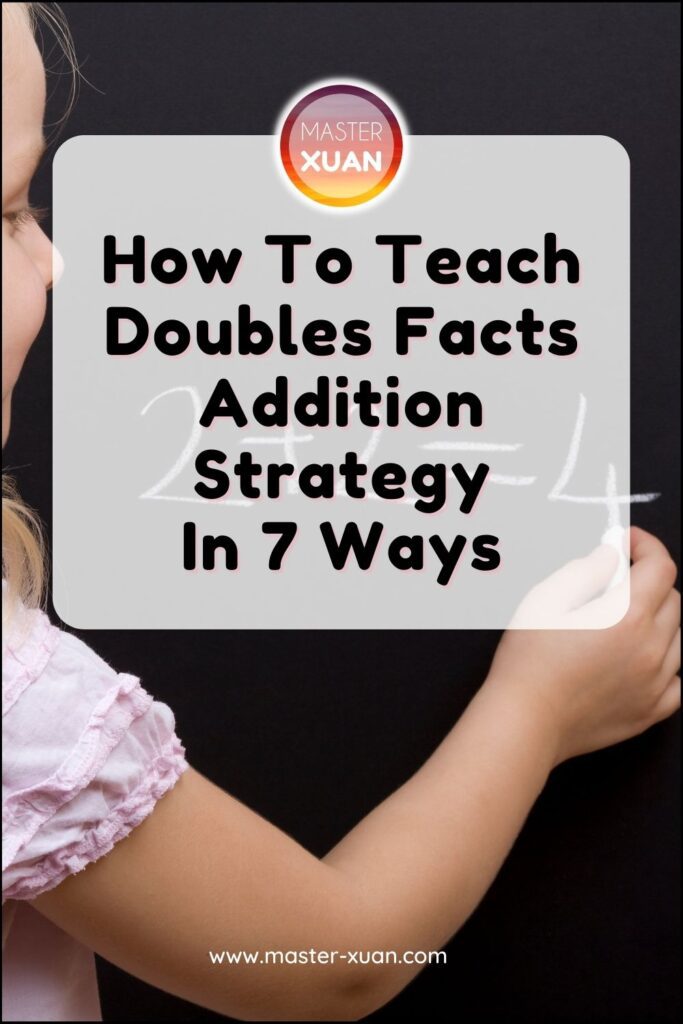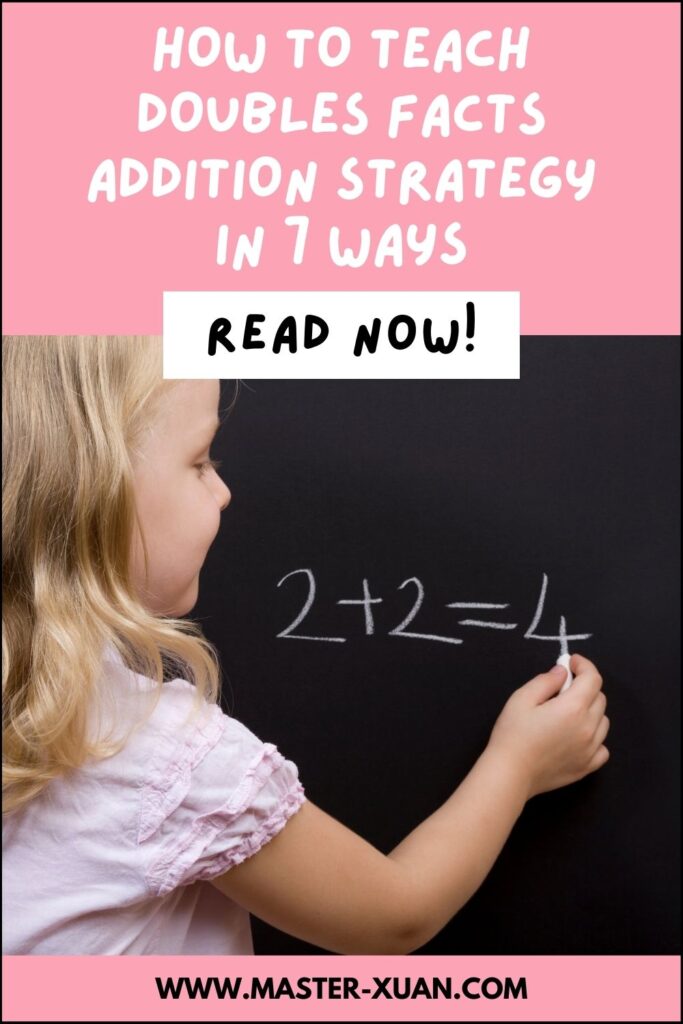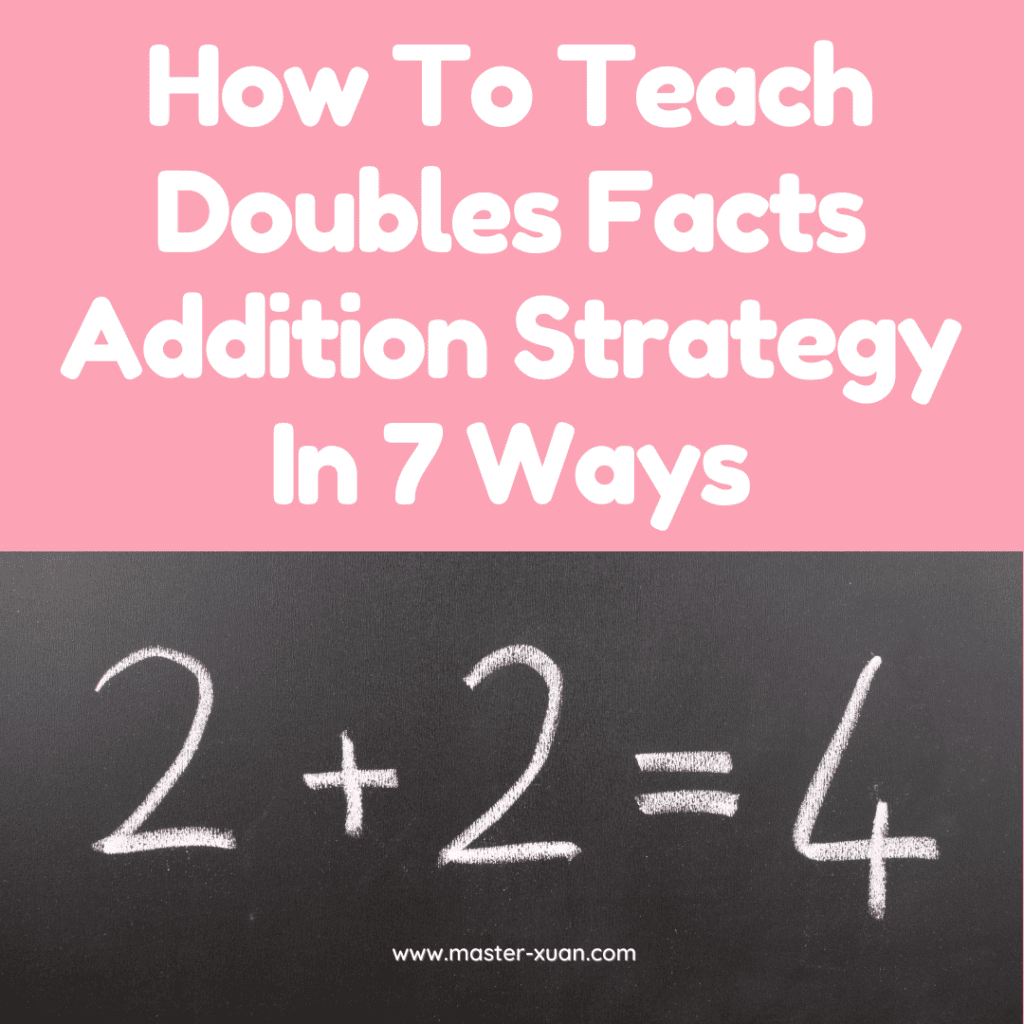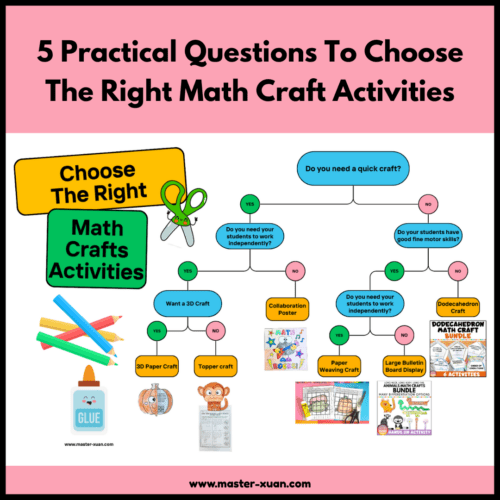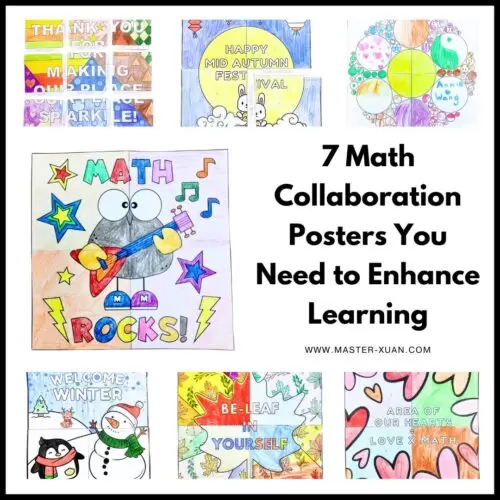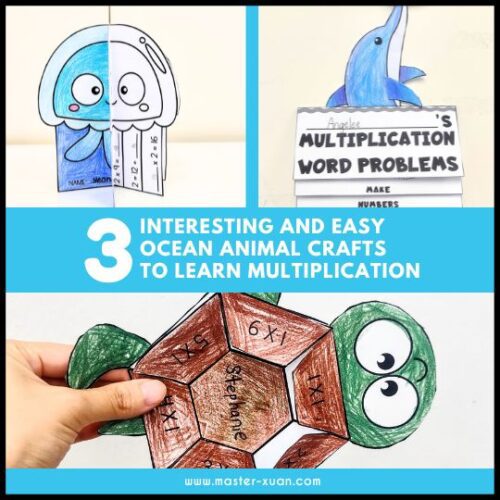How to teach doubles facts in math? What are doubles facts addition strategy? Why are they important? After reading this article, hopefully you get all of these answers.
First, let’s take a look at what the doubles facts addition strategy is.
What’s Double Fact In Math?
Doubles Fact Definition: Doubles Facts Strategy is a mental math strategy in which you add two identical numbers quickly.
In elementary math, doubles addition facts usually refer to doubles facts to 12:
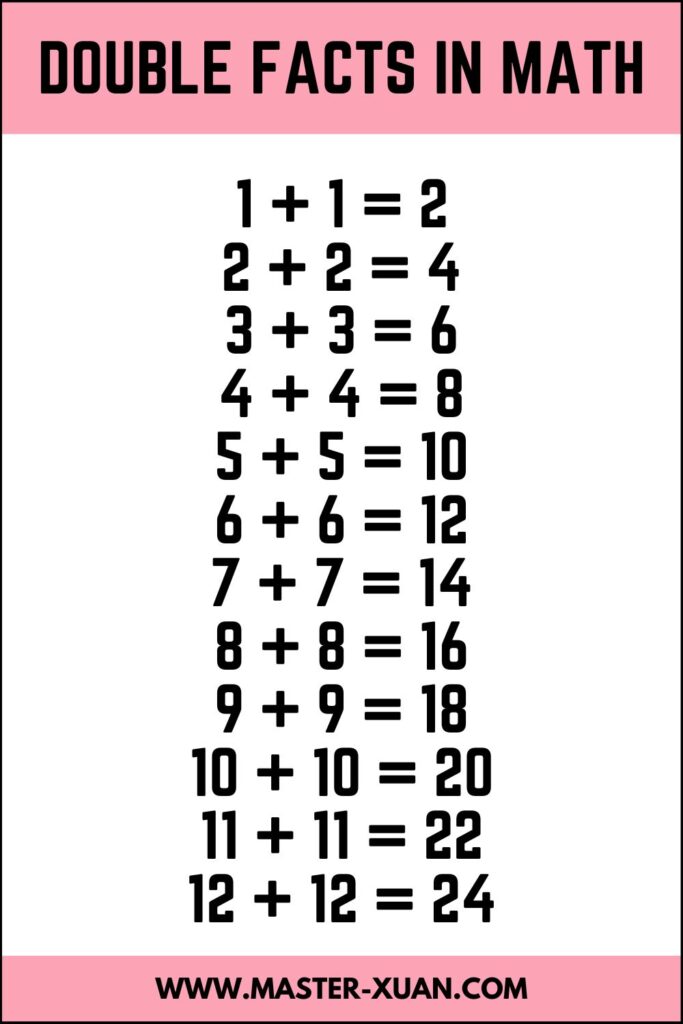
Read the blog post!
Why Are Double Facts Helpful?
Teaching Doubles Facts Addition Strategy not only enhances mathematical fluency but also lays a strong foundation for other mental math strategies such as near doubles.
So now the most important question: How to teach doubles facts in math? My answer to that is to use a variety of ways to teach doubles facts. Usually it can be split in 4 stages: introduction, practice, assess, review.
Spot Real-life Items
To introduce the doubles strategy, first let students be aware that this happened in the real world. Show them pictures and associate them with doubles. For examples:
A pair of socks: 1 + 1
Car: 2 + 2
Ant: 3 + 3
Spider: 4 + 4
Hands: 5 + 5
Eggs in a carton: 6 + 6
Then, let students walk around the room to record the pairs that they can find. They can draw or write down the items they found and the corresponding equations. Then bring them together to share their discovery.
Here are some possibilities:
Table, chair, speaker, paper thumbtacks, cardboard, lights, window, mat, posters, crayons and dominos.
Hands On Activities
First, let students work in a hands-on way to see the numbers as quantities rather than symbols. This concrete experience helps build their understanding.
You can use a ten frame mat and let students place colored cubes or manipulatives on it to add them.
Another way is to let students form doubles with manipulatives or play dough.
Alternatively, place different numbers of manipulatives in different boxes not in order. Then let students place the same number of manipulatives below them to complete the doubles. To add a sense of urgency and make it more fun, use a timer!
To add difficulty, let students write the answers of the doubles below the manipulatives. Or if you have flashcards with numbers on it, they can place them instead of writing.
Another idea is to let students hole punch a folded paper and unfold them to see the doubles they had created.
Use Posters
Placing posters with visual cues in the classroom can remind students consistently about the math facts.
Additionally, posters can be designed in engaging and colorful ways to capture students’ attention and make learning more enjoyable.
To make it even more personalized, ask students to make the posters!
Overall, incorporating posters into the classroom environment is a simple yet powerful way to support student learning and enhance their understanding of math facts.
Use Videos And Music
Students can be captivated by animated videos and may remember the math facts easier with the use of music.
- Numberock: Adding Doubles | Doubles Addition Facts Song
- Hopscotch: Doubles Addition Facts Song
- MATH-N-ROLL: Doubles Facts. Grade 1 (shows the real-life examples of doubles)
- Math Notes with Rocko: Doubles Addition Facts Song | Doubles Shuffle (The puppet and music are cool.)
Doubles Addition Facts Games
Doubles math facts games offer an excellent opportunity to reinforce and review mathematical concepts.
They cater to various learning styles and levels of understanding, ranging from concrete to abstract.
These games not only develop fluency with doubles facts but also require students to recall them quickly.
They can be used at different stages of learning doubles facts, providing valuable practice and support throughout the process.
Snap
Setup:
This partner game requires a standard deck of playing cards. Remove the J, Q, K, and jokers so that only the cards numbered 1 through 10 remain.
Then, split the deck into 2 equal stacks. Each player receives 1 stack. Players hold their cards in a stack, face down, without looking at them.
Gameplay:
- Players simultaneously flip the top card of their stack face up and place it side by side in the playing area.
- If, at any point, two cards played by any player match in rank (e.g., two 7s, two 4s, etc.), any player who notices the match can shout the sum of the two cards.
- The player who didn’t shout the correct sum first takes all the cards in the center pile and adds them to the bottom of their own stack.
- Play continues, and the game proceeds as before.
Winning:
- The game continues until one player has no more cards.
- That player is declared the winner.
Add to 40
This partner game is easy to play. Students just take turns to roll a die and add the number twice. On the next turn, the player will add up the sum in round 1 and 2. The first player to add to 40, wins.
For example:
Round 1: Player A rolls 4, the player will record down 4 + 4 = 8.
Round 2: Player A rolls 2, the player will record down 2 + 2 = 4. 8 + 4 = 12.
Doubles Memory Match
Setup:
To play Doubles Memory Match, you’ll need to create a set of cards. On one set of cards, write doubles addition problems (e.g., 1 + 1, 2 + 2, 3 + 3, etc.). On another set of cards, write the corresponding sums (e.g., 2, 4, 6, etc.). Make sure each addition problem card has a matching sum card.
Once you’ve prepared the cards, shuffle them thoroughly and place them face down on a flat surface, forming a grid.
Gameplay:
- Begin by having the first player flip over two cards from the grid, one at a time. They should flip over an addition problem card first, followed by a sum card.
- If the addition problem card and the sum card match (e.g., if the problem card is “3 + 3” and the sum card is “6”), the player keeps the matched pair and takes another turn.
- If the two cards do not match, the player flips them back face down in their original positions, and it becomes the next player’s turn.
- Play continues with each player taking turns flipping over two cards at a time, trying to remember the location of previously flipped cards in order to make matches.
- The game continues until all matches have been made. The player with the most matched pairs at the end of the game wins.
Digital Task Cards
If you want students to do some independent, self-checking practice online, Boom CardsTM platform has some free practice that you can use. They can be used as a practice or as a review.
Disclaimer: All these freebies are not made by me!
- Adding Doubles 1-10 – Students can count the dominos.
- Dinosaur Double Facts Addition Sums to 20 – If your students love pop-it and dinosaurs, this is perfect.
- Doubles Facts (0-12) – This is a simple practice of adding doubles.
- Chocolate Doubles – Students “earn” a chocolate when they get the question correct.
- Fall Fact Family Doubles Addition and Subtraction Within 20
Assessment
Once you’ve instructed students on their doubles facts, it’s important to evaluate their understanding through a timed quiz.
This assessment tool allows you to monitor individual progress. After that you will then be able to tailor instruction to meet each student’s needs.
Final Thoughts
In conclusion, teaching doubles facts in math is essential for building mathematical fluency and providing a strong foundation for more advanced concepts.
By incorporating a variety of strategies, from real-life examples to engaging games and activities, educators can effectively introduce, reinforce, and review doubles facts.
Visual aids like posters and interactive tools such as videos and music enhance learning by providing constant reminders and engaging students in different ways. Additionally, games like Snap and Doubles Memory Match offer opportunities for hands-on practice and reinforcement of doubles addition.
By using these approaches and assessing student understanding through activities like timed quizzes, educators can ensure that students develop proficiency in doubles facts, setting them up for success in their mathematical journey.
Related Read: 23 Interesting Number Line Math Activities Students Love
Here are some pins that you can save to bookmark this post. Save them to your Pinterest Board now! ↓
